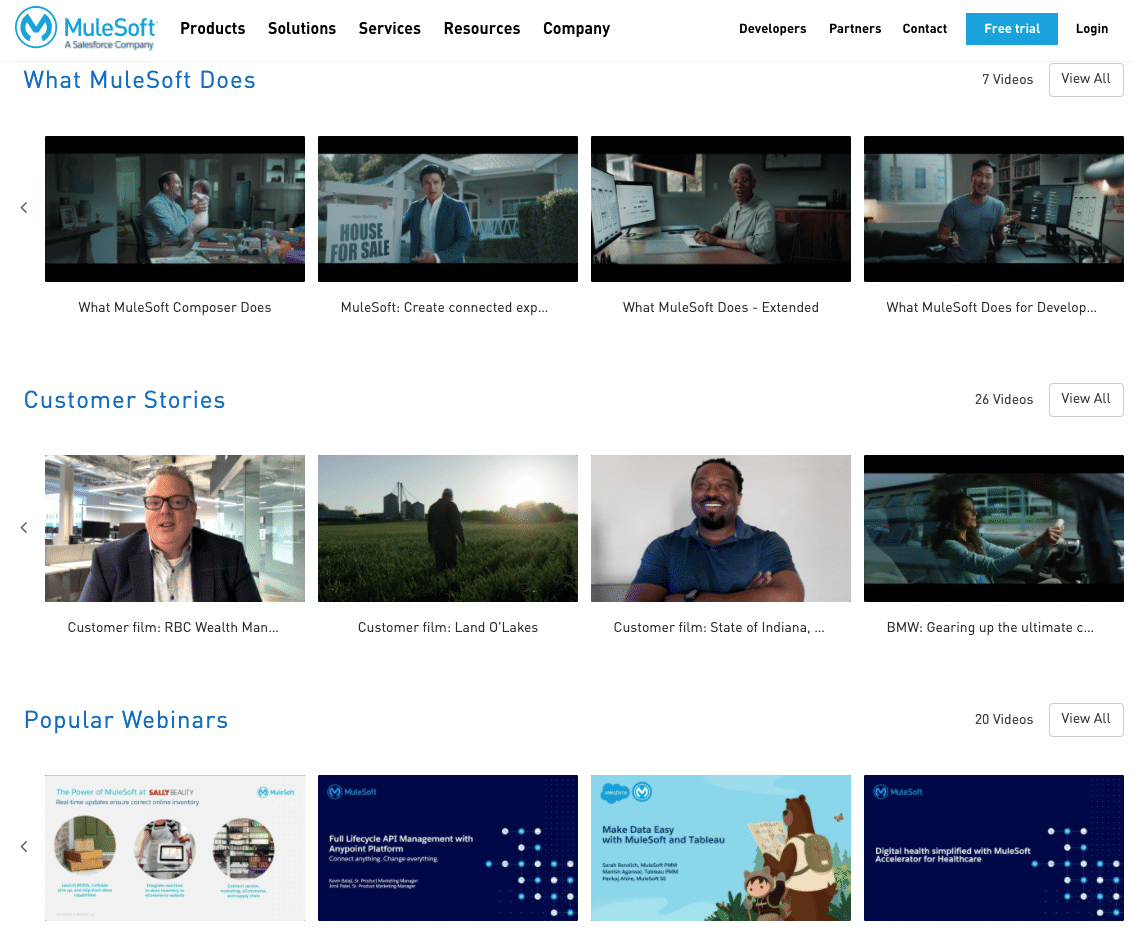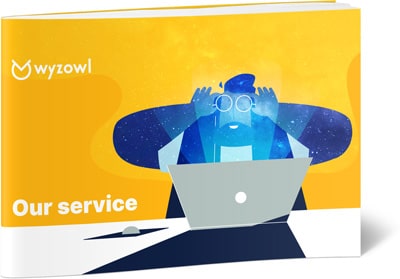Last updated on 10th January 2024
Marketers today know video is a critical component of any successful marketing campaign, and data from brands and consumers alike is proving that to be true. The average business publishes 18 videos each month, and that content is met with support by consumers – 89 percent of people say they’d like to see more online video from brands in 2024.
This trend isn’t slowing down; in fact, we’re seeing increases in video marketing adoption. 68% of the marketers who don’t currently use video marketing plan to do so in 2024.
This article provides a snapshot of where marketers are seeing success and how you can integrate video marketing into your 2024 plan.
How marketers are seeing results with video
Video can help support a variety of marketing and business goals, including sales, retention, customer experience, customer education and more. Some brands have found it difficult to measure the ROI of their video efforts, however that’s also changing. Across the board, businesses are using video to support four key goals:
- Improve web traffic
- Win sales
- Educate users
- Offer support help
We’re going to discuss details about each of these strategies below, with examples of real companies seeing results.
Increase website traffic
Video is an effective tool for earning new website traffic and keeping visitors on a site longer. Brands often promote videos on social media and other content platforms to drive consumers to a website – and 91 percent of marketers said video has helped them do just that.
One of the companies seeing results with this strategy is The Home Depot. The home improvement brand posts useful videos on Facebook, features products and usually includes a website link in the caption so viewers can explore the products more.
After earning that initial visit, marketers are then using video content on their website to encourage visitors to learn more and stay on their site longer. In fact, 87 percent of marketers say video has increased their site’s dwell time. Website videos can help convert users by:
- Telling a brand story
- Sharing a customer testimonial
- Showing the product in use
- Comparing the product to competitors who fall short
- Explaining key features and benefits
You can use video to increase web traffic by leveraging social media, which we explore in detail later in this post.
Key takeaway: Promote your video on social media and other platforms to not only boost visits to your website, but to also keep potential customers on site for longer.
Winning new sales
Sales and marketing teams are using video to stand out from competitors and convert prospects. While email drip campaigns and digital ads are helpful tools to create customer touch points during the buyer’s journey, video is a more compelling, dynamic media that helps brands tell a better story – so much that 81 percent of marketers say video has helped them directly increase sales.
On the flip side, 89 percent of people say a brand’s video has convinced them to purchase a product or service, and 79 percent of people say a video has convinced them to download a piece of software or an app. Video has the power to show and promote products in ways text and photos can’t, making it a key tool in the sales process.
One company that has done this well over the years is Blendtec, promoting its high powered blenders with its “Will It Blend?” video series. They toss heavy-duty objects like cell phones and car keys into their blenders and record the pulverisation to back up their brand promise and prove the quality of their blenders.
You can leverage video assets to increase sales by hosting product videos on your website, or by creating videos specifically for your sales team to use in their process.
Key takeaway: The compelling nature of video gives it serious convincing-power. Add it to your marketing arsenal and watch those leads convert.
Educating new users
Video is the perfect tool to help prospective customers and new customers understand how to use a product or service while reinforcing the value it adds to their lives. 96 percent of marketers say video has helped their users better understand their product or service, and 96 percent of people have watched an explainer video to learn more about a product or service.
These kinds of explainer videos help users quickly understand a product or service and its benefits without the labour of parsing through dry instructional documentation. It improves the customer experience from the get-go, and can also improve retention – a customer who doesn’t know how to use a product won’t be a customer for long.
Headspace, a guided meditation app, does a great job of this in their explainer video below. In addition to telling viewers how the app works, they reinforce key brand messages – all in just 2 minutes.
If you don’t have an explainer video, consider partnering with a video company to make one. You can feature the video on your home page so new visitors can quickly learn what your company does, and also share the video in sales presentations, emails and more.
Key takeaway: A short video can help users understand your product or service business in a matter of seconds. Why risk losing your customers’ attention with a less effective approach?
Fielding service and support questions
Quality support and customer service are critical to customer retention, but that doesn’t all have to be managed by a customer service team. Many brands are using video as a way to help users answer questions – 53 percent say it’s helped them reduce support queries.
These videos can explain frequently asked questions or provide visual instructions on how to complete certain tasks. This helps the customer save time and also saves brands money by providing at-the-ready support resources instead of relying solely on expensive customer support teams.
MuleSoft, a software company, shows the power of video to answer customer inquiries. They have an entire webpage dedicated to their video content, where they host answers to FAQs, product tutorials and more.

If you’re interested in enhancing your support experience with video, consider making a handful of videos to start. Address your most common FAQs and expand as you have the time and resources.
Key takeaway: Videos are proven to be effective at reducing support queries – use them to address your customers’ questions AND save money on customer support costs in the process.
How to use video marketing in your business
While these trends can help provide structure when planning a video marketing campaign for 2024, every brand’s plan will look different depending on their marketing and business goals for the year. While the approach should be custom, there are several trends we’re seeing emerge, including social media videos, webinars, interactive video and virtual reality.
Social media
Social media is one of the most powerful tools to use when planning a video marketing strategy, and its potential continues to grow as social platforms like Facebook and Instagram add new video features like live video and autoplay. Social videos are approached differently than brand, product, or how-to videos because of the content delivery format; most people are on mobile phones when using social apps, and are more likely to engage in short-form content.
When planning your social media video campaign, consider several of these tips to increase engagement:
- Use captions: Most Facebook videos are watched without sound, so add captions to ensure viewers receive the message.
- Front-load content: The critical moments in a social media video are in the first several seconds; you have a few short moments to grab a viewer’s attention, so deliver key messages early and make the first part of a video compelling to earn longer views.
- Try live video: Many of the largest social media platforms, including Facebook, Instagram and YouTube, give brands the opportunity to go live anytime, and those features are delivering results for marketing teams. You can use these video features to promote events, capture authentic moments and share the personality of your brand in more informal settings.
- Be open to experimentation: There are dozens of variables when it comes to social videos, including length, subject, platform, copy and more. If you don’t know what videos perform well for your brand, be open to trying new things and measuring results to find your sweet spot.
- Leverage analytics: There are many powerful social media analytics tools available. When planning for social, it helps to look at what’s been successful in the past to inform future campaigns.
Several leading brands are showing how to successfully integrate video into a social strategy. Benefit Cosmetics did a great cross-platform video promotion where they asked followers to submit makeup tutorial questions on Snapchat, and then Benefit consultants answered them on Facebook Live. The segment earned 33K views and created direct interaction between the brand and customers, all without an expensive and lengthy video production schedule.
Oreo also does a great job of providing followers with short, fun and satisfying brand videos on Instagram. Their videos, usually ten seconds or less, showcase the brand’s fun personality to build loyalty and promote limited edition products.
As you’re strategising how to use video content across social this year, brainstorm ways you can tell your brand story while providing viewers with engaging content they truly want to see. When people are scrolling through Facebook, they don’t want to be sold, they want to be entertained. Add value to their lives and in turn earn more engagement through a thoughtful social video strategy.
Webinars
Webinars are a great way to create and leverage long-form video content. In addition to providing value to a prospect or customer, webinars can serve as a lead generation tool; many marketers make webinars available for free and require attendees to submit information in exchange. Those leads are both highly qualified and very valuable to a marketing team.
Quality webinars add true value to a viewer and position the host as a thought leader. They usually include a plug for the product but aren’t too sales-focused. That can turn off viewers. The best webinars include:
- Audience interaction
- Compelling visuals
- A custom hashtag for social engagement
- Q&A sessions
One of the best parts about webinars is the content can be reused; you can perfect the content and webinar deck, and promote the webinar on a weekly basis to engage new attendees without recreating the wheel. As you’re considering whether to add webinars to your video strategy, consider the topics that will address the problems your target audience faces to position yourself as a thought leader and go-to resource in your space.
Interactive video
Interactive videos are an exciting media where viewers can interact with the video in a choose-your-own-adventure-style experience that’s highly personalised and engaging.
Deloitte executed a great example of interactive video during a recruitment campaign. Viewers got to experience a day in the life of a Deloitte employee and were challenged throughout the interactive video to solve problems and overcome obstacles that were related to core Deloitte brand values. The experience added a fun, engaging element to what could have been a stale recruitment campaign.

As you’re considering how interactive video can be an asset for you in 2024, take a lesson from this brand. Tie the video into a campaign that helps meet a business need, and ensure your brand promise and value are expressed in the video. Interactive videos can be fun and engaging, but should always correlate with higher-level business goals.
Virtual reality
Virtual reality, often referred to as VR, is a fairly new trend in video marketing. VR can be used as a hyper-engaging and very entertaining way to deliver a brand message.
The power of VR comes in its ability to take viewers to new locations – be them real or fictional. For example, Tom’s, the non-profit shoe company, took fans to Peru using VR. The video gave viewers a real-life, 360-degree view of a village in Peru where children received Tom’s shoes. It both showed the need for shoe donations and proved the value of what Tom’s does, building brand affinity and loyalty.
Lipton Tea also transported fans to a new location, but in a different way. They used VR to promote their Japanese Matcha tea line and took viewers into a cup of tea itself for a unique, never-before-seen perspective.
Because VR can only be experienced with a VR headset, consider pairing this video method with an event, where you can provide attendees the hardware they need, like at a conference or in-store activation. Alternatively, you could pair VR with a direct mail campaign and mail out branded cardboard VR headsets, an affordable way to create multiple campaign touch points.
The video marketing landscape is constantly evolving, but one thing remains the same: if used well, video can be a critical component to a marketing strategy that drives sales, increases retention, builds brand awareness and improves the customer experience. Whether you’re just beginning to experiment with video marketing, or you’ve been using it for years, consider these tips to make the most of your video strategy in 2024. For loads more video marketing tips and ideas, head on over to our blog.







